#California monolith
Video
Flanary-EB Santa Fe-MonolithCA-1994 by Ron Flanary
11 notes
·
View notes
Photo
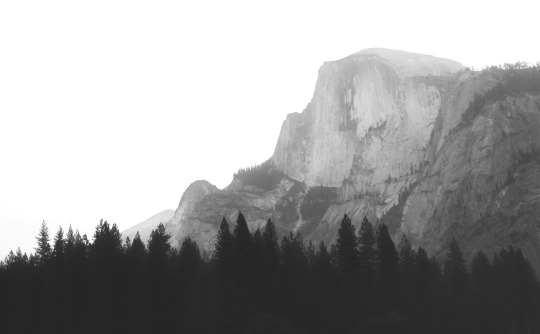
#yosemite#half dome#yosemite national park#national park#landscape#black and white#monolithic#icon#landmark#Ansel Adams#monochrome#monochomatic#monochrome photography#california#roadtrip#hiking#national parks#outdoor photography#outdoors#forest#black and white photography#landscape photography#travel photography#national park service#travels#black and white landscape#landscapes#dramatic landscapes
15 notes
·
View notes
Text
Ok, since some folks are still struggling with this: No, having a national popular vote for president wouldn't mean that "just 2 or 3 states would pick the president."
First of all, that's *basically* what's already happening with the Electoral College. Because the states are winner-take-all, it doesn't matter if you lead in a state by 3% or 30%, you get 100% of the vote. So the only states worth campaigning in/listening to are a few swing states, where you need to eek out a 1% lead to win 100% of the points.
We see this in the actual campaign event data. Two thirds of the presidential and vice-presidential post-convention campaign events were conducted in just four states in 2012 (Ohio, Florida, Virginia, and Iowa). The electoral college doesn't empower rural voters or small states. It just allows campaigns to hyper-focus on the undecided voters of swing states. So if you're a centrist in Ohio, I guess the EC was tailor made for you? But no one else benefits here.
But, would this still happen in a national popular vote, you ask? NO. Of course not.
I don't blame folks for not realizing this intrinsically. They are big numbers, and this "big states blah blah" rhetoric is pervasive. (Notice how often it's "California and New York" though, and never Texas. Ask yourself why.)
Let's assume, for fun, that 100% of the population of the country can and does vote. For rounding purposes, that's 330 million people.
Even if you could get California, Texas, Florida, New York, and Pennsylvania to vote 100% unanimously for the same person, you'd fall woefully short of of 50%, and that's getting EVERY SINGLE PERSON in these states to agree. You need the 9 most populated states to vote 100% turn out in unison to hit 50% of the population.
California (Population: 39,613,493)
Texas (Population: 29,730,311)
Florida (Population: 21,944,577)
New York (Population: 19,299,981)
Pennsylvania (Population: 12,804,123)
Illinois (Population: 12,569,321)
Ohio (Population: 11,714,618)
Georgia (Population: 10,830,007)
North Carolina (Population: 10,701,022)
But, as I've said many many times, states are not political monoliths. Despite what those red v blue electoral maps train you to think, these states aren't hiveminds.


Both of these maps represent the 2016 election. Personally, I like the first one more, since the intensity of the color mirrors the amount of votes, but the second one really drives home how *blended* our communities are politically.
In 2020- 155,508,985 votes were cast. That's 77,754,493 for 51%. How many states, at a minimum, would it take to reach that number based on how they actually voted? Well, let's go from most populated down until we hit 51%.
CA- 11,110,250 for Biden
TX- 5,259,126 for Biden
FL- 5,297,045 for Biden
NY- 5,244,886 for Biden
PN- 3,459,923 for Biden
IL- 3,471,915 for Biden
OH- 2,679,165 for Biden
GA- 2,473,633 for Biden
NC-2,684,292
MI-2,804,040
NJ-2,608,400
VI-2,413,568
WA-2,369,612
AR-1,672,143
TN-1,143,711 (we aren't done yet)
IN 1,242,498
MASS 2,382,202
MI 1,253,014
MA 1,985,023
CO-1,804,352
WIS-1,630,866
MIN- 1,717,077
SC-1,091,541
AL- 849,624 (We're still only at 68 million, by the way)
LA- 856,034
KN- 772,474
OR-1,340,383
OK-503,890
CN-1,080,831
UT-560,282
NV-703,486 (We're getting close now, I promise)
Iowa-759,061
AR-423,932 (I'm so tired of adding these numbers up)
MIS-539,398
KA- 570,323
NM- 501,614 (SO CLOSE I really thought this would do it.)
Nebraska- 374,583 (DAMMIT NEBRASKA! We're still short!)
Idaho- 287,021
And that does it! That puts us above 77,754,493 and it only took every Biden vote from the 38 most populated states.
Hardly the "Californians and New Yorkers making all our decisions for us!" reality that people decry (Never Texas. Even though we had more Biden voters than New York. But Texas isn't the standard boogeyman for a racially, ethnically, religiously diverse, queer coastal city. Even though Texas has 4 of the 10 largest cities in the country, more than California- Houston, San Antonio, Dallas, and Austin)
YES, a lot of people live in California. Yes, a lot of people live in Texas. Yes, it's super weird to me that the city of San Antonio, Texas has almost 3x the number of people in the entire state of Wyoming. (I'm sorry if you think that Wyoming's 73,491 votes for Biden should make or break the election.)
But please remember that individual states and districts still get their representation in Congress. (Which...I have some opinions about how much this actually impacts federal politics that are their own thing.) State governments and local governments still exist.
And this idea that a popular vote system, which we use for senators and governors and mayors and school boards is suddenly ~oppressive~ and ~tyrannical~ when we apply it to the presidency isn't logical. (If 70% of your town lives in apartments, you don't give folks in single family homes an extra vote to balance out their vote for mayor.)
Frankly, going to the popular vote should be a logical first step. Ranked choice ballots (for president and senate), and party proportional voting (for the house) would go a long way towards making people feel like their votes had real power again, increase voter turn out, and I think motivate the parties to better reflect the wishes of their constituents, reduce our political tribalism, and encourage third party participation.
4K notes
·
View notes
Text
@lynettethemadscientist replied to your post “me: narratively, it's much more interesting to...”:
I’m willing to hear a humanized view of Raiders. Though I doubt it will convince me
Sure, I'll expand on this. Point of note, this is pretty West Coast/FNV-centric since that's my primary area of interest.
Let's start with defining terms since this is the piss-on-the-poor website. A raider is a bandit, someone who survives by plunder, often roaming in search of things to steal or people to attack. Many raider gangs in the Wasteland are relatively loose allegiances of a few like-minded individuals, but some are established social groups with distinct cultures. The 80s, the Vipers, and the Khans are examples of raider groups that expanded to fit the definition of a tribe—that is, a social division consisting of families or communities linked by social, economic, religious, or blood ties, with a common culture and dialect.
The 80s, first outlined in Joshua Sawyer's rpg, are a gang of bandits that operate along the Northern California 80 Freeway and have long contested territory with the White Legs; The Vipers are organized around their shared religion, which is only vaguely described as ancient, but there are what appear to be ritualistic elements to their organization and raiding practices.
The Khans, inspired by Genghis Khan and the Mongols Motorcycle Club, value strength and martial prowess. Founded around 2141, the Khans raided and traded around Shady Sands and Junktown before they were wiped out by the Vault Dweller. Darion, the lone survivor of the original gang, rebuilt it into the New Khans, who in turn were largely destroyed by the Chosen One. Finally, Papa Khan united the fragmented bands and led them to the Mojave in 2267, where they settled. The massacre at Bitter Springs establishes that at this point, the Khans include non-combatants in their group such as children and elders, and until the NCR occupation, Bitter Springs was their home.
I'm going to proceed on the assumption that we all agree that genocide is wrong and set aside the Khans for now, especially because they are a faction that is not immediately hostile to the player, in contrast to the Vipers, Jackals, and Fiends.
Despite their lore, the Vipers don't get anywhere near the development the Khans have and end up in the category of fodder for the player to indiscriminately kill, an act for which you can even gain karma. And this is what brings me to the point of the original post, which is... hey, what the fuck?
I understand from a game mechanics perspective that it's useful to have an unlimited supply of enemies that the player can slaughter for experience points. But, that necessarily dehumanizes the members of that group, which is extra fucked up when you consider that some of them, like the Vipers, are a distinct tribal group.
And even in the case of, say, the Fiends, who we are told are fueled only by bloodlust/dependence on chems and presumably lack any sort of identifiable cultural allegiance, I don't like that it's considered morally good to just kill them all. They're still people.
I would like, especially from a role-playing game, to have more options to talk them down, to get them help for their addictions, and attempt to reintegrate them into society. Maybe that doesn't work on every character, maybe some of them really do just revel in violence and bloodshed and don't want a way out, but I'd like more recognition that raiders aren't a monolith and don't exist in a vacuum, that these are individuals who were driven to where they are by myriad circumstances and an underlying need to survive. It's more realistic and more interesting.
The way the Khans are developed has plenty of problems, certainly, but I appreciate that there was at least some development of who these people are and how they got to be where they are, and I think that's something that's lacking with a lot of the others.
#lynettethemadscientist#raiders#fallout#fallout 2#fallout 3#fallout: new vegas#fallout 4#fallout 76#mojave correspondence
252 notes
·
View notes
Text

Sunrise on El Capitan, Yosemite National Park, California, USA.
📷 Denis Wagovich
El Capitan (Spanish: El Capitán; "the Captain" or "the Chief") is a vertical rock formation in Yosemite National Park, on the north side of Yosemite Valley, near its western end. The granite monolith is about 3,000 feet (914 m) from base to summit along its tallest face and is a world-famous location for big wall climbing, including the disciplines of aid climbing, free climbing, and more recently for free solo climbing.
Source: Beautiful Planet
76 notes
·
View notes
Note
you're zoning revolution sounds like it would be killed in the dirt by nimby's and homeowners who have no incentive at all to change the way things are. would it be completely necessary to build red vienna say in california for example or are there no loopholes or some such the state can use?
One of the potential pitfalls of political analysis, especially of a kind favored by the left, is assuming that the power of interest groups (especially that of capital owneers) is monolithic and unchanging. In reality, power is usually divided (homeowners do not have the same interests as developers, for example) and variable (it depends on voter turnout, the attitudes of the electorate, changing demographics, and a host of other factors).
Hence why in the last few years, we've seen single-family zoning (to take one example) outright banned in California, Oregon, and Washington - that is a huge L for NIMBYs. It doesn't mean the NIMBYs lost on every single housing reform bill, or that YIMBYs are now the hegemon, but it does show a changing balance of power.
So rather than having to look for loopholes, I think it's worth pushing forwards on a broad front, because I think NIMBYism can be beaten in a straight-up fight.
58 notes
·
View notes
Text
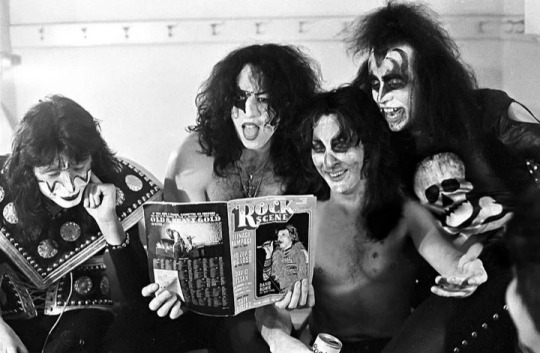
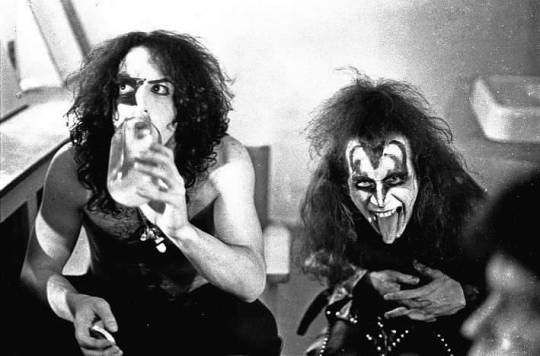

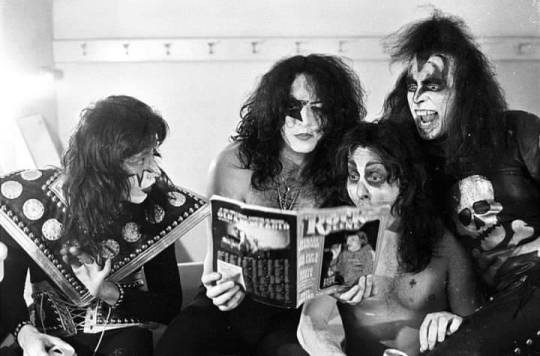
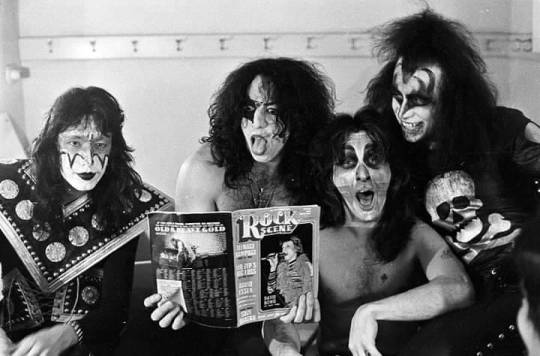
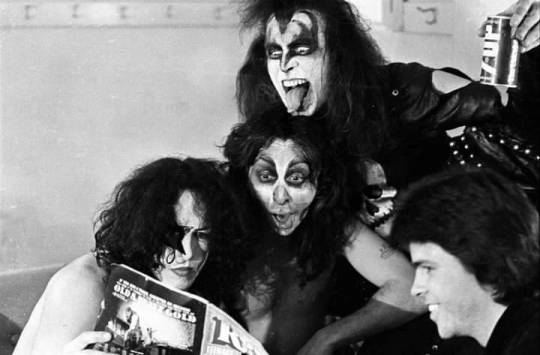
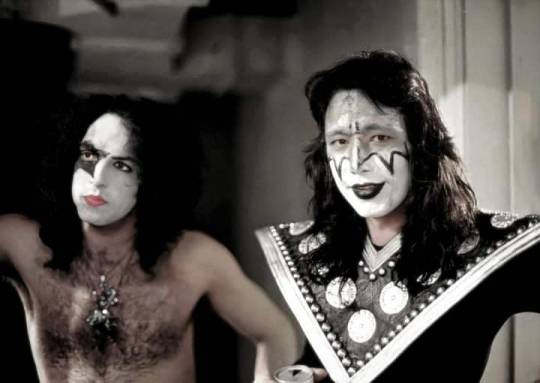
May 31, 1974
KIϟϟ Tour
Long Beach Auditorium - Long Beach, California
The show was broadcast live on local radio station KNAC.
"Opening the show was KIϟϟ, mutant offspring of glam-rock and heavy-metal. Its monolithic music is predicable if you’ve heard Purple or Sabbath, and its show, for all the effort that appears to have gone into it, suffers because its tidiness and perfection work against the threatening air it tries to create. By borrowing from people like Alice Cooper, Blue Oyster Cult, et al, and taking these elements to ludicrous extremes, KIϟϟ has come up with an oppressive package that will probably turn them into stars. But the Stooges would have run them off the stage with their studded, leather tails between their legs“ (Los Angeles Times, 6/3/1974).
#kisstory#kiss#1974#ace frehley#paul stanley#peter criss#gene simmons#kiss band#kiss army#the spaceman#the starchild#the catman#the demon
103 notes
·
View notes
Note
NEED 2 hear more abt indigenous!amerus….
[AAHHHH oh my goodness, I love this QUESSSTIOONN!! I think--]
to begin, Russia and America have more than 300+ indigenous cultures and languages within their regions. I do not aim to represent them as a monolith nor do my hcs aim to define a solitary native culture as their respective identities. seeing as they are a personification of their countries, I see them as an amalgamation of each culture's traditions.
working off the last post where I reference them speaking Diné and Koryak:
they began speaking these languages to each other in the early 1800s because of how close they were growing as friends. seriously, Fort Ross (aka Metini as named by the Pomo indigenous people of the region) was a Russian settlement established in California that existed to trade only with Americans. Alfred and Ivan used this settlement to get to know each other better and truly appreciate their indigenous identity over the revered status of their caucasian colonial overseers (Fort Ross was actually funded by an imperialist company so pls assume cultural diffusion is the only good thing they did; I only ref it as a point in history that connects their indigeneity as Siberian, Alaskan, and American natives all passed through this fort). It started off as a means to better interact with each other's people but then they began communicating exclusively with each other,,, and then it became more intimate,, y'know.
they would often hunt together (and al absolutely knocked it outta the park) but ivan would help him with preparing fur pelts (as koryaki or aleut/inuk culture exceeded at making coats and it was the largest trade in FR).
Native American and Siberian and Inuit/Inuk peoples in early history were IN LOVE with astronomy (and i'd say the pioneers of astronomy as a science)! this is where both Ame and Rus acquired their appreciation for space, and of course, the number one thing they geek tf out about together. space is not simply their hyper-fixation, but a part of everything they do. they plan ceremonies in kamchatka by the arrangement of the stars (specifically the Pleiades, or aka sakiattiak (Inuit) or coyote's daughters (Paiute)) because it is the origin of indigenous life. they camp out in chaco canyon at every equinox to stargaze.
they don't stay 'I love you' to each other. however, they do cook each other the most elaborate and appreciative meals: venison with cowberry sauce, smoked omul, cajun salmon, frybread (NAVAJO TACOS 4EVER) w all sorts of toppings, and BEEF JERKY! they prepare the best beef jerky in the whole darn tootin world!!!
Ivan is the singer in this boy band and Alfred is the dancer (and drummer tbh). Ivan is downright gifted in throat singing and could perform the dance of the seagulls with one stoli bottle and half a bar of alenka chocolate in his system. alfred can belt out while drumming, there's no doubt-- but I can tell you right now that he is DEADLY with his men's traditional dance. tbh, he wins 1000+ seduction points with Ivan when he dances lol
THEY CREATE FOR EACH OTHER. when they hunt, they use every bone in that sacred creature's body to make each other charms, knives, bracelets, rings, little beads for beaded jewelry--
AND BOY DO THEY BEAD!! ivan's regalia is comprised of reindeer skin and beads, and al will go 40 hrs straight sewing them on for him as well as making his headbands and jingle bells (he's a pattern whizz). al is more of a boujee native, so Ivan freaking obliges him so much that he will bead the most beautiful earrings, chains and medallions you have ever seen (he is a design whizz-- also alfred begged him for one with the vegas knights to brag to his bro about cause STANLEY CUP RAAAAH!!)
#hetalia#rusame#amerus#this n8v girl has been waiting to unleash her indigenous rusame hunger for YEARSSSS#thank you for giving me that outlet fam <3#please do look up native american and siberian astronomy its legitimately beautiful#also LISTEN TO YOUNG SPIRIT'S 'weechaaaala' that is ALFRED FOOKIN JONES singing to IVAN BRAGINSKY#kikitalkz
20 notes
·
View notes
Text
“In theory, group counseling to address the root causes of abusive behavior sounds promising. If batterer intervention programs make abusers less violent and, as a result, victims safer, why wouldn’t it be a preferable alternative to sentencing someone to, say, a year in jail, as Majors faced? But decades after the first programs were established, we have limited and highly contradictory research on how well they work. Some studies have found batterer intervention programs reduce future violence; others conclude they have little to no impact. The National Institute of Justice says results are “mixed.” Complicating matters, batterer intervention programs aren’t a monolith, and curriculum and quality varies wildly from one to another…
But while batterer intervention programs may prove effective when abusers attend, a huge portion of participants simply don’t. Anywhere from 15 to 58 percent of participants fail to complete treatment, often with few consequences. A 2022 state audit of California batterer intervention programs, including those in L.A. County, where Majors is expected to attend, found that probation officers and program providers frequently failed to inform the court about absences and other probation violations, including serious ones, such as contacting a victim under a protective order. In California, like in Massachusetts, those who completed the programs had a lower rate of reoffending than those who dropped out — 20 percent compared to 65 percent — but notably, nearly half of the domestic-violence offenders reviewed by the state did not complete the program. The “system has not adequately held offenders accountable,” the audit concluded, adding that these issues “have plagued the batterer intervention system for at least three decades, creating a critical need for statewide guidance and oversight.” Without proper supervision, these programs can end up functioning as literal get-out-of-jail-free cards.”
One evening last summer, I logged onto Zoom to observe a virtual counseling program for men who perpetrated domestic violence, run by a Boston-based group called Emerge. There were nine men of various ages and ethnicities and backgrounds on the call. Some were at home, video-conferencing from their bedrooms, one was in the car, and another was taking a leisurely walk outdoors, his sunglasses blocking his eyes from view. Emerge has a set format for these classes, which run weekly for 40 weeks and are generally populated by men court-mandated to attend by a judge. Participants begin by identifying themselves and the name of the person they abused, serving, it seemed to me, a dual purpose—centering the victim at the onset of the session and promoting responsibility. At Alcoholics Anonymous, it’s Hi, I’m John and I’m an alcoholic. At Emerge, it’s Hi, I’m John and I’m an abuser.
The walker, whom I’ll call Jeremy, was doing his weekly check-in with the group when David Adams, the co-founder of Emerge and one of two facilitators on the call, asked him a direct question: What was the abuse he committed that landed him in the program? Emerge encourages men to talk candidly and in detail about their abuse — what preceded it, what they did, how it impacted their partner — and accept feedback from the rest of the group about their behavior. The hope is that participants will begin to recognize and interrogate their own patterns of abuse and, over time, undergo the slow and uncomfortable process of change. To be successful, this intervention model requires active, incisive coaching by group leaders, Adams explained in a paper describing the program, as left on their own, “abusive men tend to give superficial or highly skewed reports of their interactions with their partners.”
Jeremy, still walking, began describing his relationship with his ex-girlfriend. They both struggled with insecurity, he said, leading to arguments over stupid things. “We were both wounded birds, just trying to soar through the sky, and we just, kind of like, we didn’t have very good communicative skills,” he said. Adams stopped his digressive answer there. The question, he reminded Jeremy, was how exactly did he abuse his partner? Now, Jeremy’s voice sped up. “Just like … pushing … I like, pulled her down the stairs, but like two … two stairs, you know?” he replied. “It wasn’t like I dragged her down a flight of stairs and she was all beat up or nothing crazy like that.” He went on: “I don’t want to reflect on my past because I am accountable for my actions, and stuff like that. But it was again, like I said, based upon our insecurities and not having good communicative skills.”
In Jeremy’s telling, his physical violence toward his girlfriend was caused by their mutual insecurity. It was only a few stairs. Nothing crazy. It is exactly this type of thinking that batterer intervention programs, as they are called, are designed to combat. Emerge, circa 1977, was the first such program in the U.S., born at a time when feminist activists were demanding national attention to the neglected issue of domestic violence. As hotlines and shelters sprung up for victims, Adams said, the natural next question within the movement was what to do with the men causing harm?
In the years since, programs have proliferated (over 2,500 exist, according to one count) and are now fully integrated into the criminal-justice system. These days, if you are convicted of a domestic-violence offense, it is likely you’ll be mandated to go to one. Millions of men have attended, including celebrities such as Mel Gibson, Christian Slater, and Chris Brown, who bragged about completing the class on Twitter: “Boyz run from there [sic] mistakes.. Men learn from them!!!” he wrote. (Four years later, a judge granted another woman, Karrueche Tran, a five-year restraining order against Brown, who she said he threatened to kill her.) And earlier this month, Jonathan Majors was sentenced to a 52-week batterer intervention program in California after being convicted of assaulting and harassing his ex-girlfriend Grace Jabbari.
In theory, group counseling to address the root causes of abusive behavior sounds promising. If batterer intervention programs make abusers less violent and, as a result, victims safer, why wouldn’t it be a preferable alternative to sentencing someone to, say, a year in jail, as Majors faced? But decades after the first programs were established, we have limited and highly contradictory research on how well they work. Some studies have found batterer intervention programs reduce future violence; others conclude they have little to no impact. The National Institute of Justice says results are “mixed.” Complicating matters, batterer intervention programs aren’t a monolith, and curriculum and quality varies wildly from one to another.
Most states have legal standards that regulate programs, but oversight falls to different departments with distinct goals. In California, for example, the Probation Department is in charge. In Massachusetts, it’s the Department of Public Health. Generally, participants are mandated to attend once a week for anywhere from 8 to 52 weeks (the longer the better for real change, Adams says). While models range, most programs are a mix of therapy and education, covering topics such as conflict-resolution skills, effects of abuse on partners and children, and how to take accountability. With victims’ consent, Emerge checks in with them throughout the 40 weeks to see if there has been any additional violence or threats and assess victims’ sense of safety. If a perpetrator refuses to own up to his actions or suggests he might commit more violence or stops attending, programs are typically supposed to communicate with probation, courts, and even the partner in question. “If we get somebody 12 weeks into our program who’s still blaming his partner, then we put that in a letter,” Adams said, which can be helpful to partners who are trying to make a decision about whether to stay in the relationship.
Adams, a psychologist who grew up with an abusive father, is a true believer in the power of these programs to save lives. When I asked him about the dismal research on effectiveness, he said studies often lump together participants who quit with those who complete it. Truly changing someone’s deep-seated and long-held thought patterns and beliefs takes time, he explained. “Many of the studies look at somebody who dropped out after one session and reoffend and count that as a program failure,” he said. “If substance-abuse programs were evaluated that way, they would all be considered to be failures.” He directed me to a 2015 pilot study conducted by the Harvard Kennedy School that assessed three batterer intervention programs in Massachusetts, including Emerge. It found that participants who completed such a program were 28 percent less likely to recidivate — measured as an arrest for a future domestic-violence-related crime — than those who failed to complete the program. Stated another way, those who dropped out were three times more likely to be arrested for domestic violence again than those who completed the work. (Of course, evaluating a program’s success using future arrests reveals only the tip of the iceberg, as domestic violence is chronically underreported to police.)
But while batterer intervention programs may prove effective when abusers attend, a huge portion of participants simply don’t. Anywhere from 15 to 58 percent of participants fail to complete treatment, often with few consequences. A 2022 state audit of California batterer intervention programs, including those in L.A. County, where Majors is expected to attend, found that probation officers and program providers frequently failed to inform the court about absences and other probation violations, including serious ones, such as contacting a victim under a protective order. In California, like in Massachusetts, those who completed the programs had a lower rate of reoffending than those who dropped out — 20 percent compared to 65 percent — but notably, nearly half of the domestic-violence offenders reviewed by the state did not complete the program. The “system has not adequately held offenders accountable,” the audit concluded, adding that these issues “have plagued the batterer intervention system for at least three decades, creating a critical need for statewide guidance and oversight.” Without proper supervision, these programs can end up functioning as literal get-out-of-jail-free cards.
In 2016, I was invited to attend a conference on batterer intervention in Dearborn, Michigan. For three days, I listened as leaders in the field, many of whom had been working on this issue since the ’80s, described what they’d learned. Session titles, such as “Real Change, Real Challenges: Moving Forward Through the Backlash” and “Let’s Set the Record Straight!” reflected a sense of frustration with how outsiders perceive the work. I left with the impression that many batterer intervention practitioners genuinely believe that reforming abusers is a critical step — maybe even the critical step — to reducing domestic violence yet is chronically underfunded, the ugly duckling of the movement to stop violence against women. Few advocacy groups are interested in raising money for programs that help abusers, especially if it seems like it might divert resources from victims.
Bringing us back to Jeremy, the Emerge participant. After he finally acknowledged to the group that he pushed his girlfriend down “two” stairs, Adams called him out. He noted that Jeremy kept referring to the core problem as “our” insecurities, as if his girlfriend’s insecurity played a role in the violence. “You’re taking responsibility for your abusive behavior means it’s 100 percent a choice that you’re making. Regardless of how insecure or whatever the other person’s feelings are, right? It has no relevance.”
“I comprehend everything you’re saying,” Jeremy responded guardedly.
Adams continued. “I’m just recommending that you think differently about it, because if that’s the way you continue to think about it, then you’re not responsible. You’re saying, ‘Well, if I get into another situation where both people are insecure, then of course I’m going to be abusive,’ as if one follows naturally from the other.” At this, Jeremy squirmed and frowned. The audio cut out for a few seconds.
Once he was reconnected, he conceded the point. “I should have said ‘my insecurity,’” he said. “I absolutely agree to what you’re trying to say. And my mind-set changes in each group that I come into.”
When asked what Jeremy hoped to get from the program, he said he wanted to learn from his mistakes. “I want this lesson to have an effect, a very big impact in my behavior, my lifestyle and everything.” Of course, it’s easy to say that, whether you really mean it, and some men do fake their way through the classes without genuinely engaging with the content. Regardless, Adams said, “fake it ’til you make it” can still produce an impact.
I asked Adams how Jeremy was doing, nine months after I observed him in class. He’s still attending, Adams said, which is something. He’s taking somewhat more responsibility, but he still deflects from time to time. There’s still more work to be done.
8 notes
·
View notes
Text
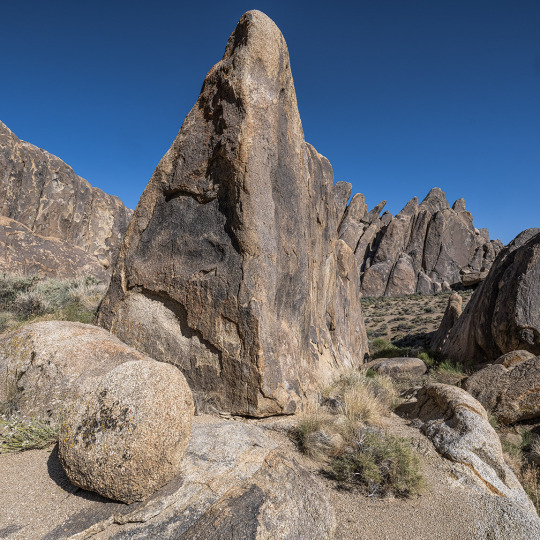
monolith,
Alabama Hills, west of Lone Pine, California.
#california#color photography#photographers on tumblr#landscape#original photography#desert#geology#park#original content#frank foster
36 notes
·
View notes
Text
Your Past Comes Back to Haunt You (The Fonotone Years 1958-1965) from Dust-to-Digital
7 notes
·
View notes
Note
No pressure about answering! Discard if impolite!
Are you out as nb to ur classmates/colleagues/patients? And if so, are they accepting? Im wondering how welcoming did you find people that are going into healthcare nowadays, as someone who is considering it.
Friends: yes
Classmates: no
Colleagues: no
Patients: fuuuuuck no
My top choice of residency is in SoCal and seems extremely trans friendly, including having a clinic and trans health care as a requires part of the curriculum and a blatantly queer interviewer who was SO into the LGBT stuff on my CV, so if I get into that place, we will see. But my issue with being out to people who aren't my close friends is that I am no longer in San Francisco surrounded by other queer people, and watching the cishets (or even the cis gays, to be perfectly honest) try to wrap their minds around the concept is an exercise in masochism. At one point, one of my professors found out, and I was actually somewhat unhappy with the person I thought told her until we ferreted out that it had happened in a fairly innocuous manner.
After a certain point, I am personally more comfortable getting the wrong pronoun used because the person doesn't know than because the person has been told but doesn't care enough to not fuck it up repeatedly anyway.
To be clear, nobody's actually tried to hate crime me, but it's just a lot of effort to bother with in geographical areas that are conservative. I'll reassess when I'm a doctor and not at the bottom of the totem pole surrounded by people who have more power over me than they would over someone they were at least paying to be there. I'm in a very conservative part of California and it's just not worth the hassle over here, even if half of "the hassle" is people who are well meaning but super excited to meet their first ever not-cis person and tell them all about their own thoughts on the subject.
In the end, I think your location and work culture has the most influence on this! Culture in medicine is far from a monolith.
And hey, Dr. is a gender neutral title. ;)
#personal#medical school#being out to my actual friends takes care of most of my dysphoria#and i'm masking like 90% of the time with most other people anyway so it just feels like part of that! ^_^
16 notes
·
View notes
Text


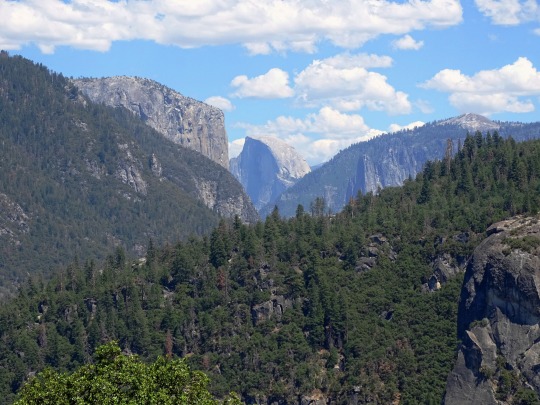

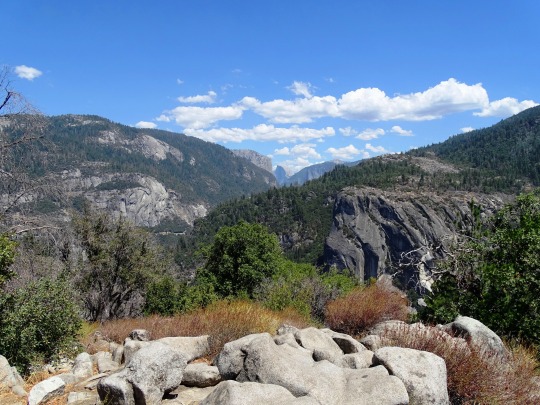



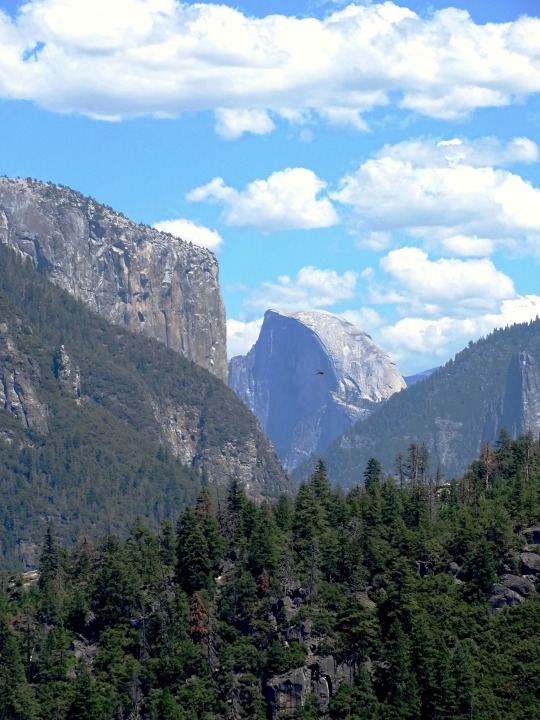
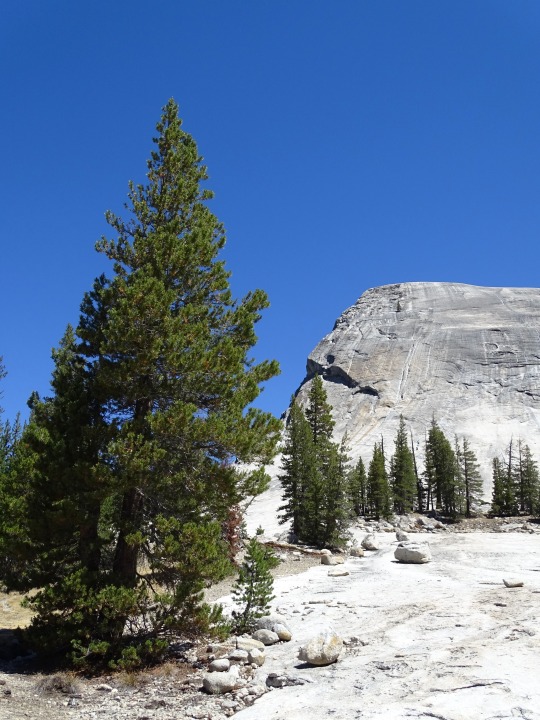

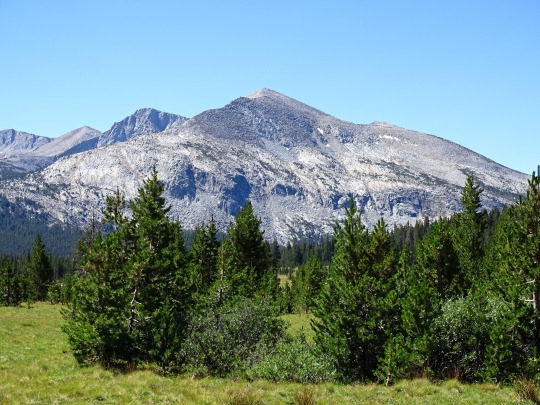

Yosemite National Park, CA (No. 12)
Half Dome is a quartz monzonitebatholith at the eastern end of Yosemite Valley in Yosemite National Park, California. It is a well-known rock formation in the park, named for its distinct shape. One side is a sheer face while the other three sides are smooth and round, making it appear like a dome cut in half. It stands at nearly 8,800 feet above sea level and is composed of quartz monzonite, an igneous rock that solidified several thousand feet within the Earth. At its core are the remains of a magma chamber that cooled slowly and crystallized beneath the Earth's surface. The solidified magma chamber was then exposed and cut in half by erosion, therefore leading to the geographic name Half Dome.
Source: Wikipedia
El Capitan (Spanish: El Capitán; "the Captain" or "the Chief") is a vertical rock formation in Yosemite National Park, on the north side of Yosemite Valley, near its western end. The granite monolith is about 3,000 feet (914 m) from base to summit along its tallest face and is a world-famous location for big wall climbing, including the disciplines of aid climbing, free climbing, and more recently for free solo climbing.
Source: Wikipedia
#Yosemite Valley Vista Point#Yosemite National Park#Sierra Nevada#Mono County#geology#flora#California#summer 2022#tourist attraction#landmark#landscape#countryside#USA#nature#forest#woods#fir#pine#rocks#travel#original photography#vacation#granite#blue sky#clouds#Olmsted Point#Clouds Rest#Half Dome#Tenaya Lake#El Capitan
7 notes
·
View notes
Text
@anachrolady
Since my replies seem to be giving me some trouble, let's talk about this article you sent me.
See, while this writer did a great job of repeating the same tired arguments we were all taught in middle school history, he doesn't actually give any evidence for them.
"Undemocratic? Absolutely. That’s the point."
I LOVE when people just...admit this.
For example:
That’s why America is not a democracy. We’re a constitutional republic. The Electoral College is part of that
This is just straight up not true. Even ignoring the little rhetorical game of "not a democracy, a republic" (which is like saying a square isn't a rectangle) the EC is not the reason we are a republic. We're a republic because we elect representatives, rather than taking a general election vote on legislation directly. The EC has nothing to do with that.
The Electoral College has other advantages. It asserts that all the states matter, big and small. States are political entities whose elected officials are by definition closer and more accountable to the people they serve...This means states must at some level compete with one another to improve the lives of their residents
This offers neither evidence nor even REASONING for why the Electoral College would mean that states have to be receptive to their citizens quality of life or freedoms. It's literally a non-sequitur.
The Electoral College also makes sure that presidential candidates don’t spend all their time in the most populated areas of the country.
This one is a popular claim, but is also just straight up ignores reality. YES, the EC means that candidates don't just campaign in the states with the largest populations. Instead it means that they only campaign in SWING STATES. Two thirds of the presidential and vice-presidential post-convention campaign events were conducted in just four states in 2012 (Ohio, Florida, Virginia, and Iowa).
Why this is somehow better, no one has bothered to explain.
ethnically concentrated regions of countries all across the globe have seen brutal violence and outright war because their political interests were ignored by far-away majorities who ruled over them. The electoral college helps mitigate that risk by incentivizing presidential candidates to pay attention to all parts of the country.
Not only is "the EC is the reason we don't have civil war" a WILD CLAIM (we DID have a civil war WHILE WE HAD THE EC) it's also built on the assumption that the EC promotes candidates going to all parts of the country. It doesn't.
If you want the presidency, Democrats, win it fair and square.
And this is what I mean when I say the EC encourages people to treat elections like they are a sporting game, or some kind of Risk style board game.
The idea that the *same style of election* we use for EVERYTHING ELSE - govenors, senators, congressmen, mayors, city council, Railroad commisoner- is somehow CHEATING if we were to apply it to the presidency is absolutely mind boggling.
The EC and its points and it's flat red vs blue maps has made people imagine that states are political monoliths. That either you are a Red state or a Blue state and it's a game to see how much of the map you can control and how many points you can get.
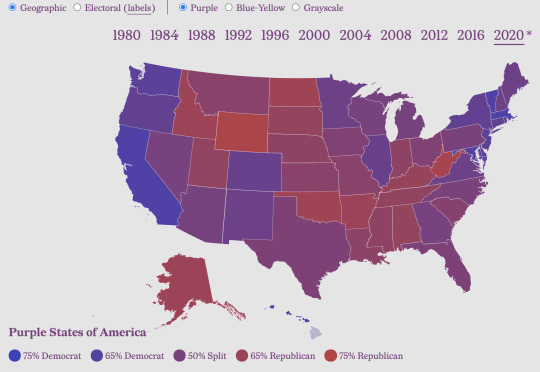

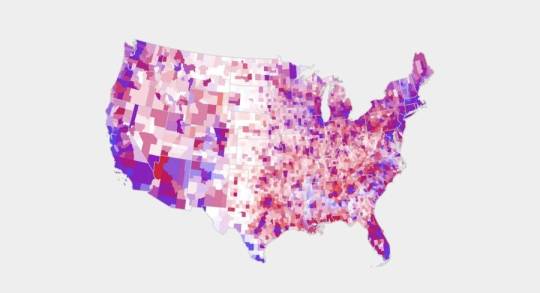
This is how the country actually votes. No state is won by larger than a 70% margin. No county or city is 100%.
California had more Trump votes (6 million) than Texas (5.8 million.) Texas had more Biden votes (5.259 million) than New York (5.244 billion). But yall have let those solid red v blue maps rot your brain, and you haven't checked a single claim that supposedly justifies this ass-backwards system.
Do better.
891 notes
·
View notes
Text
Okay so I watched Days of Girlhood and I can kind of see why people are mad.
1) Dylan does not sing it well. The high pitched parts sound different. I would not have given her a song with that chorus.
2) Whoever styled Dylan could've done better. She looked incredibly pasty the whole time and every outfit she wore made her look super skinny her head look gigantic. The blonde wig did not help. If there had been more a-line dresses or just more of a flare to any of her outfits she would've looked a lot better.
The effect of these two things made the video seem very off. I also think the 50s aesthetic was trying to be barbie-esque but it came off more like edward scissorhands. The whole thing kind of assaulted my senses and honestly put me in an annoyed mood. And then when you actually listen to the lyrics, it's a lot easier to feel annoyed or take offense.
Are the lyrics bad or inappropriate? No, not really. But they aren't good. Most of the song is about drinking, shopping, or romantic contact but then the chorus says "these are the days of girlhood" which, I know is how Dylan describes her transition, but for like 99% of the population girlhood=childhood or even being an adolescent. It's a nostalgic time and I don't think the idea of girlhood being about the adult activities she describes was the best creative choice.
The other thing is she chose the wrong genre. If this had been more of a club song like songs put out by Paris Hilton and Ke$ha it would've made more sense. But it's rare these days to see this kind of bubblegum pop to be just about shopping, drinking, etc. Bubblegum pop in general isn't really in vogue. I feel like this song would've fit right in with Call Me Maybe, California Girls, or Shake it Off. And honestly, as a person who loved that time, I've also moved past it. It doesn't have an edge of authenticity. And those songs didn't really claim womanhood the way this one does. I think a lot of women have the experience of "types." A "California Girl" is a type. Those artists sold themselves as certain "types." I feel like Marina and the diamonds played into this aa lot with Bubblegum Bitch and How To Be A Heart Breaker. Songs made by women for women present men as a monolith and songs made by men for men present women as a monolith. This song was presumably one made by women for women but it presents women as a monolith.
And honestly, it's just not good. Like it isn't saying anything. There's not a single metaphor or anything. It really is just a list of activities and a chorus. And they're not even relatable. Retail therapy? In this economy? It is reductive and just boring.
Is the backlash fair? No, of course not. At the end of the day, it's just not a good song. It kind of gave me a headache watching the video. But that's not a crime. At the same time though, I feel like anyone would've gotten ripped apart for this song. Dylan is trans and it is a very dangerous environment for trans women. I know that definitely play a big part in this. The thing is, it absolutely shocks me that she didn't see this coming to some extent. Like...did she watch the video? Personally, I wouldn't have put that out if I were at the same risk she was. Especially because she has just gotten out of a huge transphobic controversy. Like the crazy people are watching you and waiting for you to fuck up and you put out a video that is sonically challenging, lyrically inane, and a complete visual assault and think "wow, no one's going to have any strong opinions on this at all."
Again being threatened, attacked, or experiencing transphobia is not okay. It's not. And I am sure Dylan and her team thought it was great when they put it out. I do think, that if you put your hand in a hornet's nest, you will probably get stung. Especially if you look like a haunted mannequin while doing it. And, to be honest, literally anyone would probably get the same amount of vitriol for that video. Do we not all remember lambasting Sabrina Carpenter and Joshua Basset for daring to respond to Driver's License? Do we not remember Rebecca Black? Do we not remember Tramp Stamps? This is the environment people are bringing new music into, this is the risk artists have to take on. And yes, Dylan is trans so she's getting transphobic responses, but all of those other artists were torn apart for their identities too. And everyone chastising the general public for being annoyed at bad music should have that same energy for all bad music.
6 notes
·
View notes
Text
It Never Rains in Southern California
Termination was an ugly business.
Ugly for the one getting the sack and the Watchers Council had little use for drawn out or contested terminations.
Wesley had gotten a letter and a phone call.
The letter had been from the Council and the phone call had come from his father. Both had been brief and each had left him with an empty pit in his stomach and no uncertainty of his own worthlessness.
His disgrace with the Council was so great that they hadn't even sent him a ticket home and he had been stuck between the rent on his leased place and affording a plane ticket.
He hadn't even asked his father for help. Hadn't gotten in more than a few mumbled words on the phone. There had been a lot about his failures and the disappointments and shame he had wrought. That had been the bulk of it.
With the Mayor defeated and the children graduated time seemed to have come to a stand still.
Cordelia had left Sunnydale almost immediately and with the school gone the others were no longer forced to include him in their meetings.
Wesley had eventually decided to leave town too.
He'd thought of stopping and speaking to Giles but in the end he hadn't seen much use in it. Giles hadn't particularly liked him and he supposed now that some of that had been his own fault. He had been pompous and rude but then they hadn't exactly made things easy for him either and Giles had been there the whole time making sure no one took him seriously.
The battle with the Mayor had been hell on earth but it had prevented a more real kind of hell from spreading and shamefully he couldn't say that he remembered more than the beginning. He'd been knocked unconscious almost immediately.
And now he was on the road, no money to rent a car and crammed onto a buss with fifteen or so other people.
The truth was he did have some cash but with no employment in the foreseeable future he was choosing to be careful with it. A bus was cheaper than a car and easier for him too at this point.
He slept most of the way and woke up outside of Los Angeles to the sound of people clamoring off of the bus.
It was dark out as he checked his watch and squinted through the grimy window at the world outside. The city was in the distance so why had they stopped?
He looked around and saw that it was just him and an old woman on the bus. Everyone else was outside.
"Have we broken down?" He asked her.
She looked at him, wrapped in a coat that didn't agree with the weather outside and didn't answer.
Curious, he rose and exited the bus, looking for the driver in the small throng of people. There was no smoke coming from the bus and he saw now they were parked outside of a small rest stop.
People were lighting cigarettes around him and stretching their legs but he couldn't tell which was the driver and it made him uneasy stopping like this. There were too many things in the night the others weren't thinking of.
The bus driver is smoking and so he heads to the rest stop and it's bathroom, ancient linoleum cracked under foot and sink hazardous to touch.
He feels humbled in a way. Like someone in the movies catching a bus into L.A..
It's not where he's ever seen himself ending up but here he is.
On the outskirts of a glowing monolith, L.A. with her Boulevards and Rows. Her Hills and Valleys.
He's too ashamed to go home.
He washes his hands despite the hazardous sink and stares at himself in the dirty mirror.
He's fucked up. He's fucked up so bad and the worst part is he'll think it again in the future and it will be much worse but right now this is the most he's ever fucked up and he feel's sick with it. Stepped on.
All of his school down the drain. . . years of studying and researching. . . of trying to prove himself and be good enough. . . he'd never felt good enough and now he knew he wasn't.
He didn't even know what he was going to do in L.A..
He doesn't dry his hands on the towel that's got what looks like a few years on it already and shakes them out as he leaves the bathroom.
Outside he doesn't see the others and looks around, feeling a tingling sensation creep up his spine.
It's dead silent out and there's no wind.
He pulls his jacket around him, finding it more suitable for the climate now and returns to the bus, seeing no one on it.
The he looks down spots a cigarette butt still glowing in the dirt. . . there's a few of them. . . all glittering like little stars.
He looks up and feels his skin break out in goosebumps as he steps onto the bus.
The old woman is still there, sitting in her coat with her hands in her lap, clutching a handbag that's nearly as old as she is. "
"What's happened to everyone?" He asks.
She looks up and shifts slightly, pointing out the window. "They all went out there." She say's in a croaked voice.
He looks where she's pointing.
Where the cigarette butts are laying.
"I afraid I just came form out there, are you alright?"
She shifts again and lowers her arm, looking at him with ancient eyes. "You're the last." She breaths.
He blinks and then realizes he very much does not want to be on the bus at this moment.
He stumbles backwards but she's rising out of her seat, coat rustling as she stands impossibly tall in the cramped, little, bus.
The doors open and he falls into the dirt and the cigarette butts, scampering away and to his feet and noticing a strange kind of blackness on his hands as he runs.
It's a demon. It's some kind of demon and it killed everyone else on the bus.
He runs for the rest stop and flings himself into the bathroom, chest heaving and heart hammering.
He doesn't know if the old woman has followed him yet but he'll need to know in a second.
Think, he tells himself. . . willing the gears in his mind to work. He knows what this is. Yes it's a demon obviously but he knows. . . he's read about this.
It's a Resamun. . . it eats travelers. . . it's a shap shifting demon. . .
He can almost picture the text book, the pages. . .
It's usually noncorporeal except when it eats. . . it hides in groups of travelers. . . it's vulnerable to Iron and. . .
Or did it haunt rest stops and places like this?
Maybe it could do both. . . he'll look it up after he remembers what it's vulnerable to.
This is a basic level demon.
He was just unprepared.
Like he'd been the entire time in Sunnydale.
He shuts his eyes and thinks hard.
The demon is weak against water. People can't travel in the rain and so neither could it even if the times had changed that some but this is Southern California. . . it never rains here.
He stares around him and his eyes land on the sink. The thing will dissolve if he get's it wet, maybe even die.
He has to get the water to the demon and his mind works furiously to devise a way. He has to act soon. The thing will be after him.
He's the last one.
He thinks of the cigarette butts in the grass and wonders if he should have known sooner. If he should have guessed at all. If those smoldering butts are all his fault.
He finds a bottle of cleaning solution under the end sink and dumps it down the drain, refilling it with water and stepping back outside.
The old woman is in the bus door, impossibly tall in her coat.
He straightens his shirt and walks towards her. "You're a Resamun demon." He says, lifting his chin slightly.
He has the upper hand now.
"You absorbed all of them, didn't you?"
The old woman steps off the bus and seems to grow a little as she shuffles towards him but she's slow and so he opens the jug.
He could warn her, tell her what he's going to do but he doesn't.
He's tired and he's fucked up again.
He throws the water on her and she stops, look of shock on her ancient face before she shivers and turns into a cloud of steam.
He's alone again and this time the wind lifts his hair.
The city is in the distance and the sun is coming up too, far away.
The butts aren't glowing in the grass any more.
His last stop before L.A. and he supposes that at least he did get the demon in the end.
He wishes he could feel good about it as he get's his bag and leaves the bus and rest stop and everything else behind.
Later, when the sun is fully up he'll find a car dealership and buy a bike and no longer footing it he'll pass into L.A., heading towards more than he can imagine.
#wesley wyndam pryce#alexis denisof#buffy the vampire slater#angel the series#fanfiction#fanfic#one shot#creepy#spooky#horror#angst#monsters#references to depression#fear#self esteem issues#ao3#btvs#ats
9 notes
·
View notes
